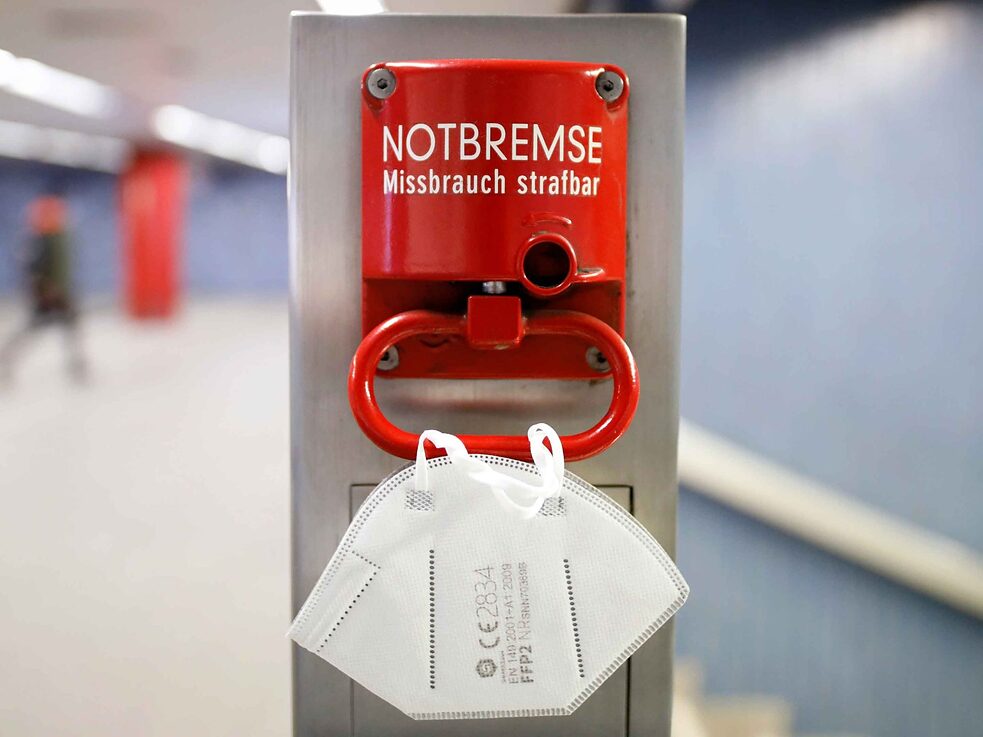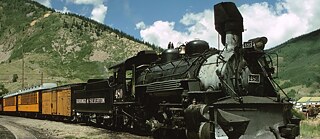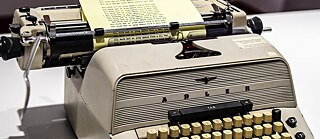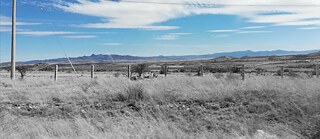Pulling the Emergency Brake on an Empty Ride
On the Wrong Train
The only kind of brake Johann Wolfgang von Goethe would have known was that of the horse-drawn carriage in which he traveled all the way to Rome. But he had already anticipated how hard it would be “to stifle the steam engine.” Had he lived just a few years longer, he might have even set eyes on a steam-driven train in Weimar. The rapidly advancing industrialization was also one of time and space.
Nowadays, enigmatic metaphors, the likes of which Goethe once admired in the poetry of the Orient, are also occasionally encountered in the most odious political statements: “This is regulated by the uniform nationwide emergency brake,” the German government announced in April 2021. While the Orient Express has long since ceased to spur the collective imagination, the poetic “dash and buoyancy” that Goethe assumed may “not appeal to the feelings of a Westerner” has quite unexpectedly bounced back in Western political prose — which here, however, means little more than German politics.
Whether the spread of a virus can be inorganically braked, as one might a locomotive, is anyone’s guess. Likewise, whether a state-installed brake can regulate even anything. At all costs, one should not adjust a crooked picture. The best thing would be to view it lopsidedly. That way, you might even be able to identify something.
 Emergency brake with mouth-nose protection from the Berlin subway
| Photo: Christoph Hesse
Emergency brake with mouth-nose protection from the Berlin subway
| Photo: Christoph Hesse
First invoked in the revolutionary year of 1848, the wheel of history seemed to turn of its own accord from then on. Revolutions, Marx announced, “are the locomotives of world history.” He was not concerned with brakes. Nonetheless, he managed to muster a certain understanding for workers who smashed machines but not for the bourgeois whose sensibilities did not keep up with their business.
While the trains blazed ahead of the times, their spirit simultaneously continued to haunt the luxuriously furnished ten-room apartments at a safe distance from the station. Yet even there, it was soon impossible to overlook the railcars rolling towards the front of a world war, which for the first time, was also being waged from the skies.
Were it ever to become the bedrock of happiness, history ought not to be brought to an end but finally be interrupted. “Perhaps,” as Benjamin pointed out to the Marxian locomotives, “revolutions are an attempt by the passengers on this train — namely the human race — to pull the emergency brake.” He noted this a few months before his death, just after the outbreak of what was then the Second World War.
With this ostensibly nonsensical concept of dialectics at a standstill, Benjamin lent historico-philosophical expression to the emergency brake, which he wanted to be grasped as a metaphor. Apply this spontaneously to the present, however, and you get quite a different picture: The standstill that the world has most recently prescribed itself reveals merely the flip side of a frenzy of activity, which prefers not to challenge the principle of its own movement. Like an unscheduled stop between stations after which “the empty happy journey” (Kafka) continues unperturbed on its route. The emergency brake is out of action, if for no other reason than that the locomotive is now in the museum. Maybe one should restart the machine that might still aptly represent society and history today.
Whether the spread of a virus can be inorganically braked, as one might a locomotive, is anyone’s guess. Likewise, whether a state-installed brake can regulate even anything. At all costs, one should not adjust a crooked picture. The best thing would be to view it lopsidedly. That way, you might even be able to identify something.
 Emergency brake with mouth-nose protection from the Berlin subway
| Photo: Christoph Hesse
Emergency brake with mouth-nose protection from the Berlin subway
| Photo: Christoph Hesse
The Locomotives of World History
The only kind of brake Johann Wolfgang von Goethe would have known was that of the horse-drawn carriage in which he traveled all the way to Rome. But he had already anticipated how hard it would be “to stifle the steam engine.” Had he lived just a few years longer, he might have even set eyes on a steam-driven train in Weimar. The rapidly advancing industrialization was also one of time and space — and meanwhile, the locomotive had become not only the revolutionary means of transport of the new age but also its symbol.First invoked in the revolutionary year of 1848, the wheel of history seemed to turn of its own accord from then on. Revolutions, Marx announced, “are the locomotives of world history.” He was not concerned with brakes. Nonetheless, he managed to muster a certain understanding for workers who smashed machines but not for the bourgeois whose sensibilities did not keep up with their business.
While the trains blazed ahead of the times, their spirit simultaneously continued to haunt the luxuriously furnished ten-room apartments at a safe distance from the station. Yet even there, it was soon impossible to overlook the railcars rolling towards the front of a world war, which for the first time, was also being waged from the skies.
Pulling the Brake
“A generation that had gone to school on a horse-drawn streetcar,” as Walter Benjamin wrote 20 years later, already exiled in Paris, “now stood under the open sky in a countryside in which nothing remained unchanged except the clouds, and beneath these clouds, in a field of force of destructive torrents and explosions, was the tiny, fragile human body.” He knew that the railroad that he himself had taken to Moscow a few years earlier, to the Rome of the proletarian revolution, was already “beginning to age” in this second new era. And also that, as if animated by an evil spirit, the progress of society — specifically of its economic and technological productive forces — is an uninterrupted catastrophe, which even socialism, freshly ushered into the world, was unable to avert.Were it ever to become the bedrock of happiness, history ought not to be brought to an end but finally be interrupted. “Perhaps,” as Benjamin pointed out to the Marxian locomotives, “revolutions are an attempt by the passengers on this train — namely the human race — to pull the emergency brake.” He noted this a few months before his death, just after the outbreak of what was then the Second World War.
Dialectics in Standstill
What was described as the breach of civilization several decades later never did any harm to this progress. One that is more in tune with every form of purportedly defeated barbarism than a progress that might truly pertain to humankind and would thus no longer need to give itself such a self-aggrandizing label. The world succeeded in arising from its second downfall as well, this time even twice as fast. For Benjamin, the emergency brake was an expression of despair and, at the same time, of revolutionary utopia in the capacity of its impossibility. Today, this clearly insensate talk of an emergency brake is more an expression of impotence, which is also plain to see in those who are invested with political power. Maybe as a symptom of a general incapacity to grasp, or at least describe, the world in which, surprisingly, we are still living.With this ostensibly nonsensical concept of dialectics at a standstill, Benjamin lent historico-philosophical expression to the emergency brake, which he wanted to be grasped as a metaphor. Apply this spontaneously to the present, however, and you get quite a different picture: The standstill that the world has most recently prescribed itself reveals merely the flip side of a frenzy of activity, which prefers not to challenge the principle of its own movement. Like an unscheduled stop between stations after which “the empty happy journey” (Kafka) continues unperturbed on its route. The emergency brake is out of action, if for no other reason than that the locomotive is now in the museum. Maybe one should restart the machine that might still aptly represent society and history today.






